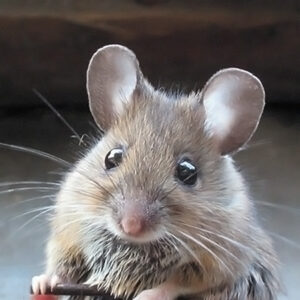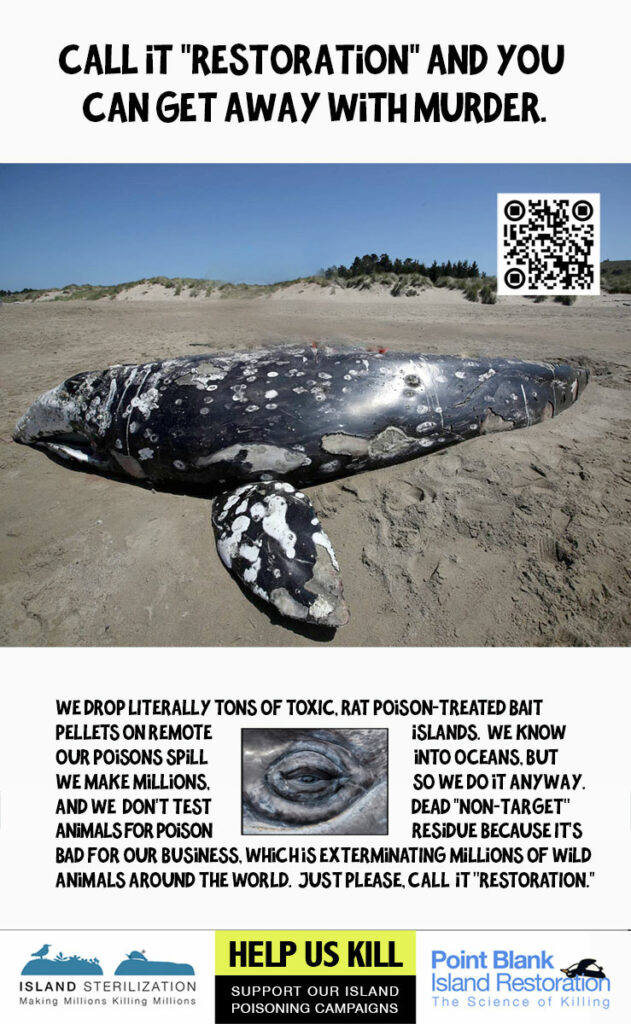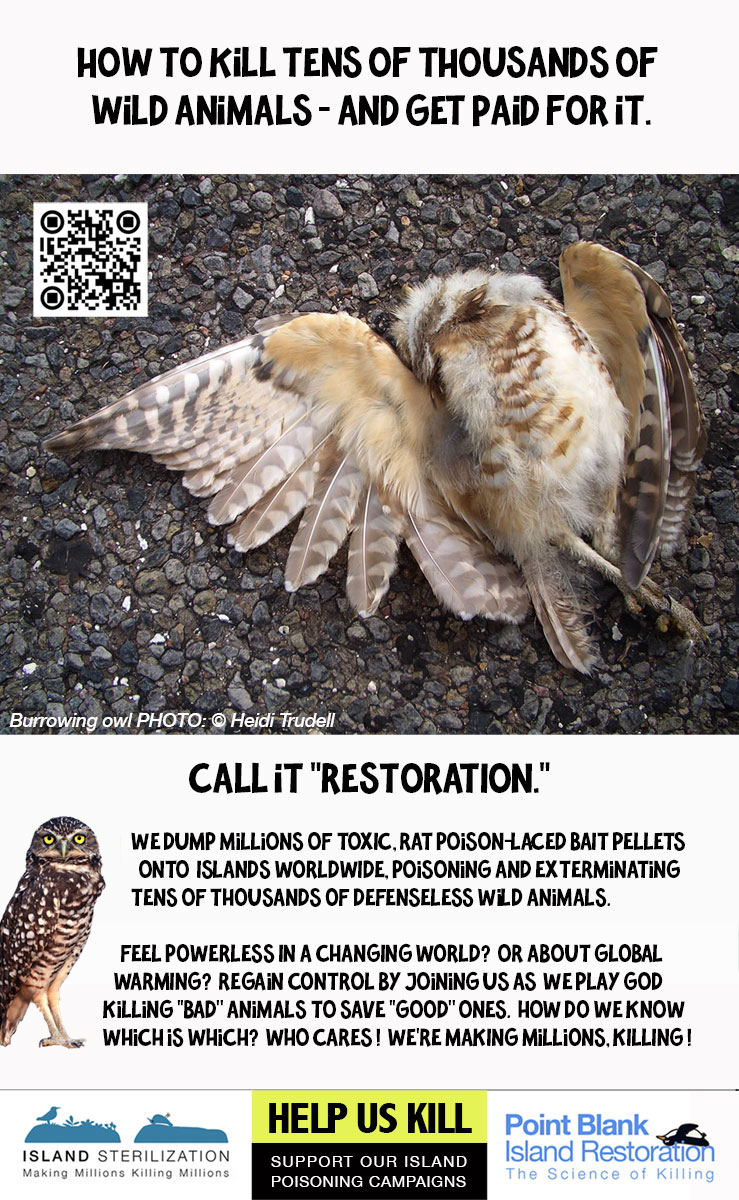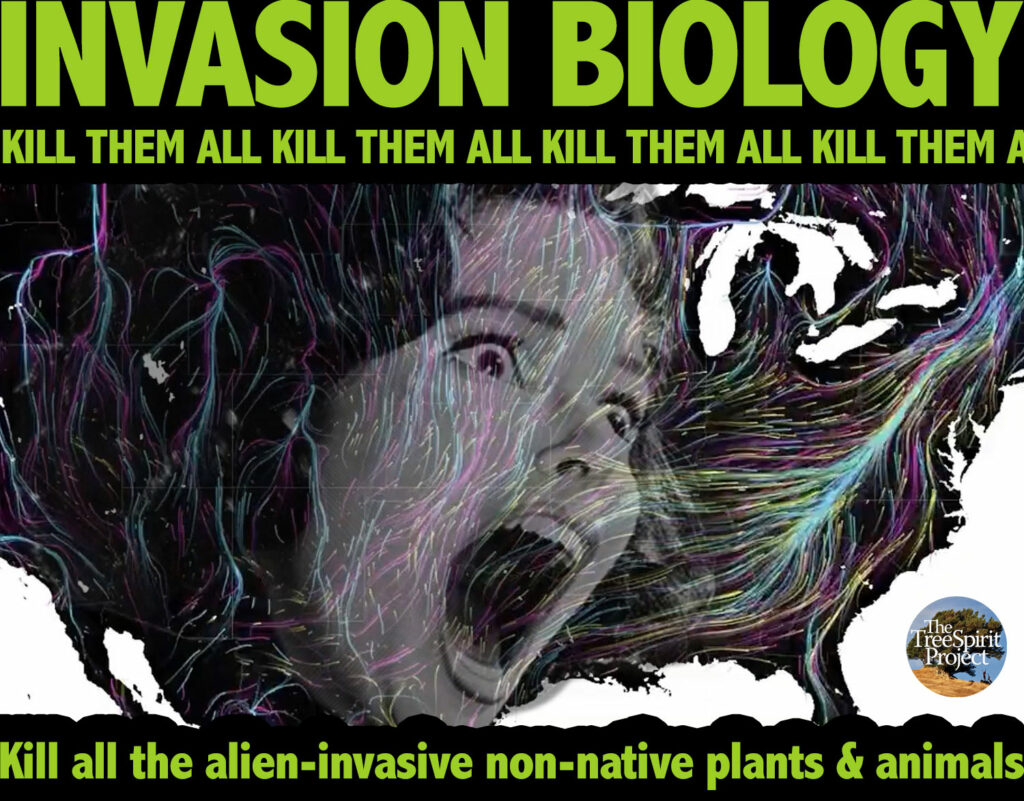Making A Killing Killing
I’m an environmental advocate, animal rights activist, and a consultant for In Defense of Animals. More importantly, I’m a nature lover — and a horrified citizen.
Horrified, because of what I’ve learned about the massive poison drop planned for the Farallon Islands National Marine Sanctuary. And the underlying reasons for it — which are not in the Half Moon Bay Review’s Feb 21st, 2024 article.
This is, simply put, a massive mice-gone-wild extermination project. To build public support for it, euphemisms like “remove” and “restore” hide the reality of a profit-driven wild animal-killing enterprise that is both unnecessary and ecologically disastrous.
Literally tens of thousands of rat poison-infused bait pellets will be rained down, from helicopters, onto islands in a National Marine Sanctuary about 26 miles off the coast of San Francisco, California.
A fleet of euphemisms are deployed by the extermination proponents to fool the public into paying millions of their tax dollars for a large-scale extermination-by-toxic poison — in a federally protected marine nature sanctuary. The public remains mostly misinformed and misled with hyperbolic narratives about a “non-native” mouse “invasion.”

The house mouse, Mus musculus, living happily on the Farallones for over 150 years.
But these aren’t rats in your basement. What’s being promoted for the Farallones, and being pushed on an under-informed public, is an the killing of thousands of animals in the wild, an industrial scale extermination using helicopters and tens of thousands of toxic rat poison pellets… in a National Marine Sanctary!
Thousands of pounds of Brodifacoum-laced rat poison pellets will be dropped onto the island. This is the polar opposite of a controlled application; it’s closer to a carpet-bombing. Any and all animals who eat this 2nd-generation, anti-coagulant rat poison — or who eat animals who have eaten the poison — will be sickened, injured, maimed or killed.
 Welcome to the modern, industrial, for-profit “restoration” industry folks. Whatever actual good may have been done under the banner of “restoration” is long gone; obliterated by the for-profit business model of chemical companies who have brilliantly used public relations firms to create a global, multi-billion dollar animals (and plants) killing industry.
Welcome to the modern, industrial, for-profit “restoration” industry folks. Whatever actual good may have been done under the banner of “restoration” is long gone; obliterated by the for-profit business model of chemical companies who have brilliantly used public relations firms to create a global, multi-billion dollar animals (and plants) killing industry.
Poisoning campaigns like this are outlawed on land — but a regulatory loophole, carved out by the chemical industry, allows mass poisonings-at-sea — even in a federally protected marine sanctuary. Which demonstrates both the chemical industry’s political power, and its public relations prowess.
The poison project’s proponents don’t want you to understand that the island’s mice, living there for over a century (since the mid-1800s), have long since become integrated into the ecosystem. Mice have become a food source for marine birds. This is what wild nature does naturally; animals and plants and entire ecosystems change and adapt over time. But there is no profit in acknowledging this self-regulating natural process. Not while there are literally billions of dollars to be made by “fixing” nature, which almost always now means killing tens of thousands of wild organisms.
Pesticides and herbicides should never be used in nature sanctuaries, not on land or at sea, because they are chemicals which injure, maim and kill broadly and indiscriminately. Ironically, this aerial bombardment of poison over the island, to supposedly help Ashy storm petrels, will likely kill some (or many) of the petrels, too.
And it gets worse. Thousands of so-called “non-target” sea birds will also be poisoned and die. The U.S. Fish & Wildlife Service estimates that over 1,000 Western gulls will die along with the house mouse “target” species, Mus musculus. For all animals who eat the poison — which is Brodifacoum, a highly toxic, 2nd-generation anti-coagulant poison — it’s a slow, gruesome death by internal bleeding and organ failure.
Many of these 1,000+ gulls — what the industry calls “by-kill” — are expected to wash up dead on the shores of San Francisco and the San Mateo coast.
How many other species of birds will be poisoned and/or killed? We won’t know. How much poison in total will be dropped on the Farallones? That’s unknown too. Helicopters will drop, initially, an estimated 3,500 lbs. of poison-laced bait pellets.
The contractors themselves, including Point Blue Conservation, anticipate the need for a second drop, and acknowledge a possible third drop. They readily admit that every single mouse must be killed, or else the surviving mice will reproduce quickly, as mice do. But of course, what’s not said out loud… in the extermination industry, this would simply mean repeat business.
No independent, third-party monitors will count corpses. The contractors claim few poison pellets will enter the Pacific Ocean — even while dropping tens of thousands of them from helicopters. Does that sound plausible to you?
Regardless of the project’s actual outcome, it will most likely be declared a success, as so many similar, toxic island “restoration” projects have been — because no independent, third-party verification is mandated. There will be no survey of the “by-kill” — the thousands of birds and marine animals who will be poisoned to death on the island or die off-island. There is strong financial incentive to not count the corpses. And strong political incentive to declare, “Mission accomplished!” (Sound familiar?)
Also dead-on-arrival is the science used to justify this mass poisoning. In the Farallones extermination, and all such similar poisonings, there is no acknowledgement that animals and ecosystems — including introduced mice, rats and others species, are all part of interconnected food web. There is no acknowledgement of the biological reality that animals and ecosystems naturally change, adapt and evolve over the years. Remember that complex web of interdependent life you learned about in grade school? The poison industry won’t. They make billions of dollars by ignoring it.
Once a dangerous foreigner, always a dangerous foreigner. Mice who have been living on these islands for over a century must be wiped out, to turn back the clock, before Europeans showed up. And that is accomplished by Killing them! Killing them all!
Actual conservation biologists — those not on the chemical industry payroll — know animal and plant species are always on the move, across continents, across oceans, and onto islands. long before European ships introduced animals. But to accept this biological science — and common sense — would undermine the entire kill-the-invasive-non-natives narrative of “Invasion Biology.” And that would undercut their multi-billion dollar, profit-driven killer business model.
Since 1962, when Rachel Carson first warned us of the toxic pesticides industry in “Silent Spring,” poison manufacturing and sales have increased exponentially.
Bombarding the Farallones with rat poison is only good for two things: making millions of dollars for the chemical industry, and perpetuating the bigger foundational lie, that we humans can kill nature back to health.
********
Jack Gescheidt is an environmental advocate and activist, founder of The TreeSpirit Project, and a consultant for In Defense of Animals. He lives in Marin County, CA.
A version of this article was published in the March 5, 2024 Half Moon Bay Review
For more information about the Farallon Islands poison drop: http://www.TreeSpiritProject.com/Farallones


